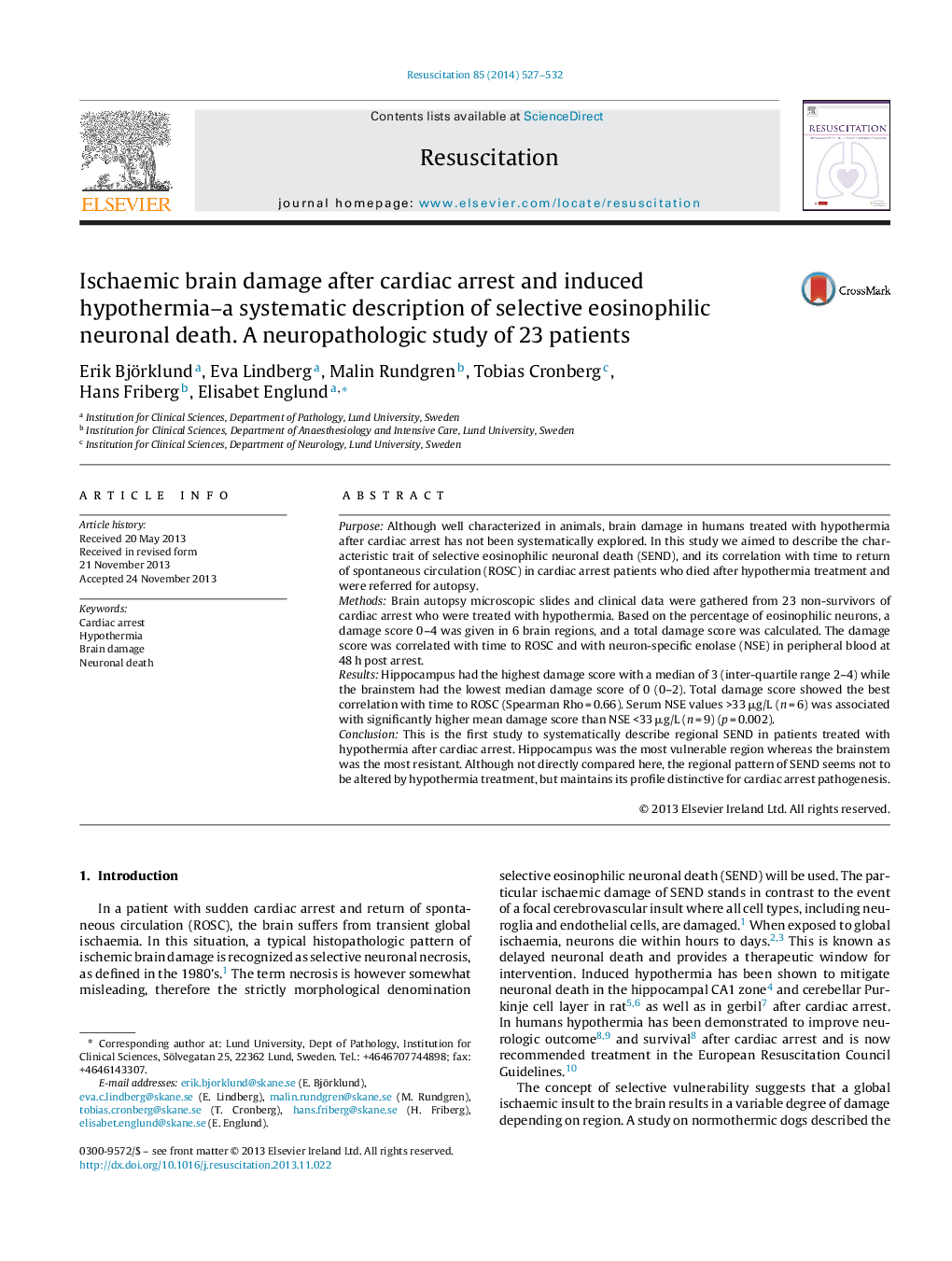| کد مقاله | کد نشریه | سال انتشار | مقاله انگلیسی | نسخه تمام متن |
|---|---|---|---|---|
| 5998852 | 1181450 | 2014 | 6 صفحه PDF | دانلود رایگان |
PurposeAlthough well characterized in animals, brain damage in humans treated with hypothermia after cardiac arrest has not been systematically explored. In this study we aimed to describe the characteristic trait of selective eosinophilic neuronal death (SEND), and its correlation with time to return of spontaneous circulation (ROSC) in cardiac arrest patients who died after hypothermia treatment and were referred for autopsy.MethodsBrain autopsy microscopic slides and clinical data were gathered from 23 non-survivors of cardiac arrest who were treated with hypothermia. Based on the percentage of eosinophilic neurons, a damage score 0-4 was given in 6 brain regions, and a total damage score was calculated. The damage score was correlated with time to ROSC and with neuron-specific enolase (NSE) in peripheral blood at 48 h post arrest.ResultsHippocampus had the highest damage score with a median of 3 (inter-quartile range 2-4) while the brainstem had the lowest median damage score of 0 (0-2). Total damage score showed the best correlation with time to ROSC (Spearman Rho = 0.66). Serum NSE values >33 μg/L (n = 6) was associated with significantly higher mean damage score than NSE <33 μg/L (n = 9) (p = 0.002).ConclusionThis is the first study to systematically describe regional SEND in patients treated with hypothermia after cardiac arrest. Hippocampus was the most vulnerable region whereas the brainstem was the most resistant. Although not directly compared here, the regional pattern of SEND seems not to be altered by hypothermia treatment, but maintains its profile distinctive for cardiac arrest pathogenesis.
Journal: Resuscitation - Volume 85, Issue 4, April 2014, Pages 527-532
